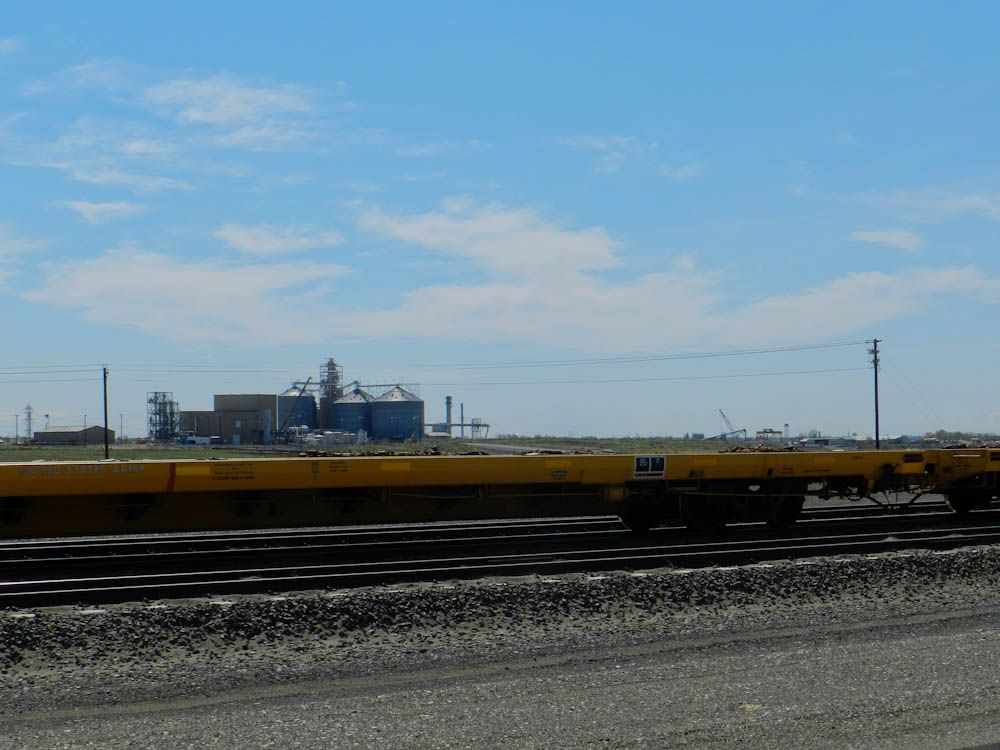The U.S. Army Corps of Engineers is reducing the area it will consider in its endangered species review for the Morrow Pacific coal export terminal proposed on the Oregon side of the Columbia River.
Instead of considering the project’s impacts to threatened salmon and steelhead along 276 miles of the Columbia River channel, the agency will limit its assessment to less than one mile around the project’s proposed dock at the Port of Morrow in Boardman, Ore.
Coal export opponents say the limited review overlooks many of the impacts the project could have on fish, and they’re worried that the Corps will also choose to ignore the project’s broader environmental impacts.
The Morrow Pacific project would transport coal by rail from Montana and Wyoming to Boardman in eastern Oregon. From there, it would be loaded onto covered barges and shipped down the Columbia River to the Port of St. Helens. There, it would be transferred to ocean-going vessels headed to Asia.
Players: Ambre Energy North America & Pacific Transloading
Full capacity: To be reached by 2016
Export plans: 8.8 million short tons/year
Trains: 22 trains/week (11 full and 11 empty)
Trains cars: 1,459/week
Barges: 12 tows/week
Vessels: 128/year
What's next: The Oregon Department of State Lands is set to decide in the fall on a dredging permit at the Port of Morrow. The Oregon Department of Environmental Quality is processing three permits: a water pollution, an air quality and a construction stormwater permit. The Oregon Department of Lands and the U.S. Army Corps of Engineers are processing another permit jointly.
Players: Ambre Energy North America & Pacific Transloading
Full capacity: To be reached by 2016
Export plans: 8.8 million short tons/year
Trains: 22 trains/week (11 full and 11 empty)
Trains cars: 1,459/week
Barges: 12 tows/week
Vessels: 128/year
What’s next: The Oregon Department of State Lands is set to decide in the fall on a dredging permit at the Port of Morrow. The Oregon Department of Environmental Quality is processing three permits: a water pollution, an air quality and a construction stormwater permit. The Oregon Department of Lands and the U.S. Army Corps of Engineers are processing another permit jointly.
Project developer Ambre Energy has applied for a permit from the corps to build a receiving dock at in Boardman.
As part of that permitting process, the corps is reviewing the project’s impacts to endangered species such as salmon and steelhead. But the agency says it will only consider the impacts within a 3,000-foot area at the project site in Boardman.
That’s a much smaller area than Ambre Energy had proposed for review last year. A document submitted by the company in April 2012 included 276 miles of the Columbia River channel in its endangered species review.
“It’s a huge rollback of their previous commitment to look at the entire length of the Columbia River and look at how coal export is going to impact endangered salmon,” said Lauren Goldberg, staff attorney for the environmental group Columbia Riverkeeper. “It means the Corps will no longer look at the impacts of barge traffic, or loading coal in the Columbia River estuary, which is critical for recovery of endangered fish.”
Corps spokesman Scott Clemans said his agency never committed to considering the Columbia River channel in its endangered species review. He said it was Ambre Energy that suggested a larger area of review, and the corps asked the company to reduce that area.
“Our interpretation of our responsibility under the Endangered Species Act is we need to study the effects of the action we are permitting, which is the construction of the dock,” Clemans said. “Other activities associated with this project located physically farther away are too far removed from the action for us to study in any detail. The Corps of Engineers is not going to exceed its regulatory authority.”
Goldberg says the corps’ decision to shrink the scope of its endangered species review suggests the agency’s permitting process won’t consider any of the broader environmental impacts of the project, such as congestion and pollution from trains and barges transporting coal.
Clemans said his agency hasn’t decided on the scope of its overall environmental assessment of the project.
The National Marine Fisheries Service, which is consulting with the corps on the endangered species review of the project, has asked the corps to do a more comprehensive environmental review and requested information about impacts from ship traffic, coal dust blowing off trains, and the contributions to climate change from burning the exported coal in Asia.
The corps has responded to the National Marine Fisheries Service that those impacts are beyond the scope of its permitting process.
This two-port plan would bring coal by rail to the Port of Morrow in Boardman, Ore. The Boardman terminal is also known as the Coyote Island Terminal. There it would be transferred by barge and delivered to the Port of St. Helens and loaded onto ships headed for Asia.



